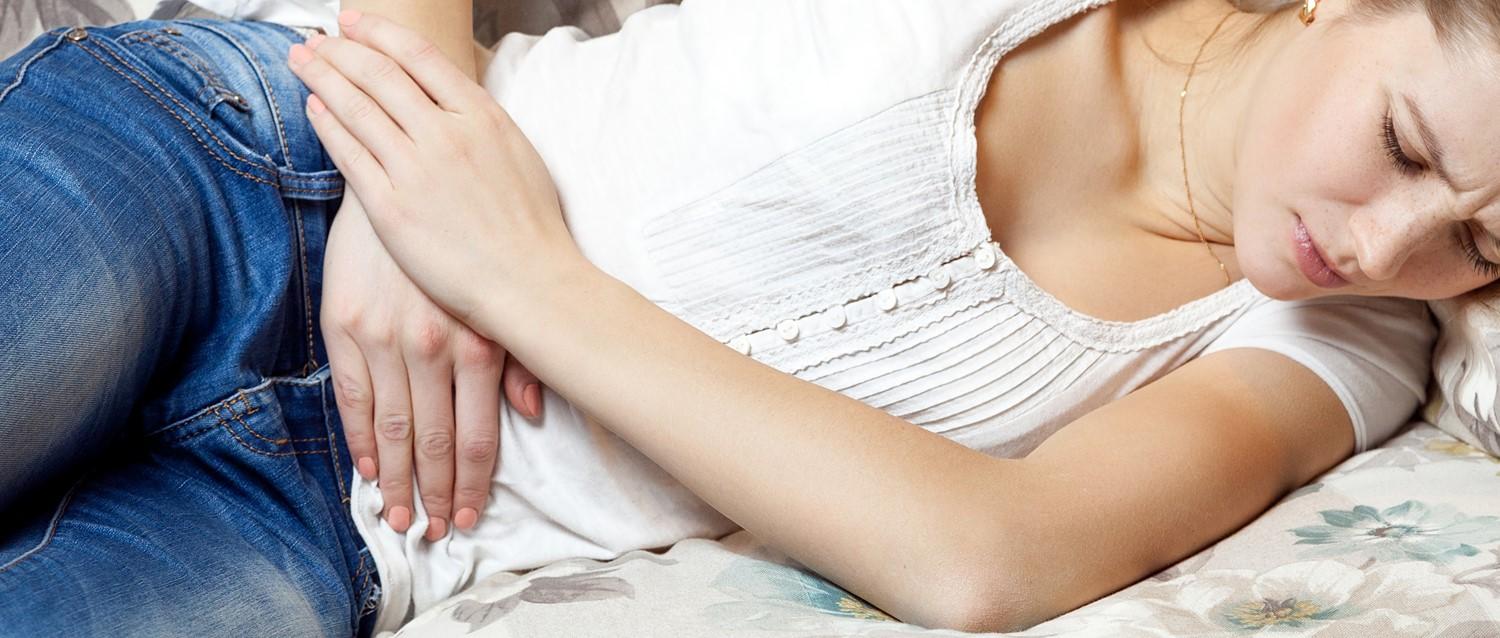Vaginal dryness
Atrophic vaginitis
Peer reviewed by Dr Philippa Vincent, MRCGPLast updated by Dr Toni Hazell, MRCGPLast updated 24 Oct 2023
Meets Patient’s editorial guidelines
- DownloadDownload
- Share
- Language
- Discussion
In this series:MenopauseHormone replacement therapy (HRT)Alternatives to HRT for menopause symptomsPremature ovarian insufficiency
Many women notice changes in their vagina and genital area after the menopause and during the perimenopause, the period of time during which periods become less regular and hormone levels fluctuate. These changes may include dryness and discomfort during sex. The term genitourinary syndrome of menopause (GSM) is now commonly used to describe these symptoms when they occur during the menopause; the condition has also been called vaginal atrophy, atrophic vaginitis and urogenital atrophy.
In this article:
Continue reading below
What is vaginal dryness?
Vaginal dryness is exactly what it says - dryness of the vagina and the tissues around it. It usually occurs after the menopause but can also occur when breastfeeding or due to some medical treatments.
Vaginal dryness symptoms
Symptoms of vaginal dryness include:
Pain during sex. This may occur because your vagina is smaller, drier and less likely to become lubricated during sex compared with how it was before the menopause. Also, the skin around your vagina is more fragile and this can make the problem worse. If pain is ongoing then it might stop you from having being sexually active.
Discomfort - if your vulva or vagina is sore and red.
Vaginal discharge. There may be a white or yellow discharge. Sometimes this is due to an infection. Infection is more likely if the discharge is smelly and unpleasant.
Itch. The skin around your vagina is more sensitive and more likely to itch. This can make you prone to scratching, which then makes your skin more likely to itch, and so on. This is called an itch/scratch cycle which can become difficult to break and can be distressing.
Urinary problems. Vaginal dryness may contribute to various urinary problems. This is because of thinning and weakening of the tissues around the neck of your bladder, or around the opening for urine to pass (the urethra). For example, urinary symptoms that may occur include an urgency to get to the toilet and recurring urinary tract infections (UTI's).
Continue reading below
Causes of vaginal dryness
Menopause
Before the menopause the skin and tissues around your vagina are kept supple and moist by fluids and mucus.
After the menopause your ovaries make less oestrogen and your body's level of oestrogen is lower. The lack of oestrogen leads to thinning of the tissues around your vagina and a reduction in the number of glands that make mucus. You may also lose some fat tissue from around the genital area and in the vaginal walls. This may make the area also look slightly different to how it was before the menopause.
Vaginal dryness is a common symptom of the menopause; after the menopause at least half of women have some symptoms related to vaginal dryness and thinning of the vaginal tissue. You are also more likely to experience symptoms as more years pass after your menopause, and so you might not immediately realise that they are due to the menopause. You may also have other menopausal symptoms such as hot flashes.
Cancer treatments
Various cancer treatment can cause vaginal dryness. These include some drugs used for breast and other cancers, chemotherapy, radiotherapy and hormonal therapy. If the ovaries have to be removed as part of a cancer treatment then the woman will go into a sudden menopause and is likely to have vaginal dryness as part of that.
Vaginal dryness treatment
Not all women have all of the above symptoms. Treatment usually depends on which symptoms are the most troublesome. Because the problem is mainly due to a lack of oestrogen, it can often be helped by replacing the oestrogen in your tissues.
Vaginal oestrogen creams and other topical preparations
A cream, gel, vaginal tablet or ring containing oestrogen is often prescribed. A vaginal tablet is a very small tablet that you insert into your vagina with a small applicator; it can be prescribed or bought over the counter. The majority of the drug is only present in the vagina, with very little absorbed into the body.
The ring is a soft, flexible ring, 55 mm across, with a centre that contains the oestrogen hormone. This ring releases a steady, low dose of oestrogen each day and it lasts for three months.
These preparations work to restore oestrogen to your vagina and surrounding tissues without giving oestrogen to the whole body. Usually the treatment is used every day for about two weeks, and then twice a week for as long as is needed. This treatment usually works well but the symptoms may come back sometime after stopping the treatment.
Occasionally a repeated course of using it daily for two weeks is needed. These preparations should not be used as additional lubrication during sex; lubricating gels should be used instead.
Note: the oestrogen creams or oil-based lubricants may damage latex condoms and diaphragms; if you are using these types of contraception then it would be preferable either to use vaginal tablets or the vaginal ring.
Ospemifene and prasterone
These are newer medications used to treat GSM - they were recommended in the November 2024 update of the National Institute for Health and Care Excellence (NICE) guidance on the menopause.
Ospemifene is a type of drug known as selective oestrogen receptor modulators (SERMs) - it acts like oestrogen in the vagina, but has the opposite effect in the womb and the breast. For this reason, women who have had cancer of the womb or breast can use it, as long as their treatment is complete.
Prasterone is a pessary which contains a hormone called dehydroepiandrosterone (DHEA), which occurs naturally in the female body before menopause, and less so after the menopause. The DHEA in prasterone is converted to oestrogen and other hormones in the vagina. It should not be used for women who have had breast cancer.
These medications are used in women who cannot use vaginal oestrogen therapy; this might be because of past medical history, or (for ospemifene) because they have an issue such as arthritis which makes it physically difficult to use vaginal therapies.
Hormone replacement therapy
Hormone replacement therapy (HRT) means taking oestrogen in the form of a tablet, gel or patches. This is often the best treatment for relieving your symptoms, especially if you are experiencing other symptoms of the menopause. There are advantages and disadvantages of using HRT. Many women are concerned about the risk of breast cancer from taking HRT, but HRT generally makes cancers grow more quickly rather than causing them, and the absolute risk is very small - obesity is a much bigger risk factor. If you are thinking about HRT but are worried about this, talk to your GP, they may well be able to reassure you.
Vaginal lubricants and moisturisers
If vaginal dryness is the only problem, or hormone creams are not recommended because of other medical problems, lubricating gels or moisturisers may help. There are different water based lubricants which can improve the dryness during sexual intercourse. You can buy these from the pharmacy and your pharmacist should be able to advise you.
Vaginal moisturisers can work really well to improve the moisture in your vagina. These need to be used regularly.
Note: Vaseline® is NOT recommended as a lubricant. It is not smooth or slippery enough and it can break down the latex in condoms.
Your symptoms should improve after about three weeks of treatment. You should see your doctor if your symptoms do not improve, as sometimes these symptoms can be due to other conditions. It is also very important to see your doctor if you have any bleeding from your vagina if you are receiving hormone treatment.
Some private providers may offer transvaginal laser therapy for vaginal dryness. NICE has looked into this and concluded that there is not enough evidence on its long-term safety and so it should only be used in the research setting.
Management of vaginal dryness in women who have had breast cancer
Women who have had breast cancer, and their GPs, are often very worried about using any form of hormones to treat the menopause. The latest update of the NICE guidance discussed the management of GSM in women who have had breast cancer, and made the following points:
Non-hormonal treatments should be used first (moisturisers and lubricants).
Women who are taking aromatase inhibitors (drugs such as anastrozole and letrozole) should generally not use vaginal oestrogen; their GP and cancer specialist should work together to identify the best treatment.
For women whose breast cancer did not have receptors for oestrogen, the use of vaginal oestrogen is likely to be safe, and unlikely to make it more likely that the cancer will come back.
For women whose breast cancer has receptors for oestrogen, it is not known whether the use of vaginal oestrogen will make it more likely that the cancer will come back. Any increased risk would be reduced if the drug tamoxifen is also used.
Decisions such as these are difficult and you may want to discuss the issue with your cancer specialist and your GP. Clinic letters will tell you whether your cancer had oestrogen receptors or not.
Continue reading below
How common is vaginal dryness?
It is likely that many women don't report vaginal dryness, due to embarrassment, but various studies have shown that somewhere between one-third and one-half of women experience vaginal dryness while they are going through the perimenopause and after the menopause.
When to see a doctor for vaginal dryness
If vaginal dryness is bothering you then you should see your GP - they will not be embarrassed and might well be able to prescribe something that can help you.
Dr Hazell is on the board of the Primary Care Women's Health Forum, a role that involves both paid and unpaid work.
Patient picks for Women's sexual health

Sexual health
Pelvic inflammatory disease
Pelvic inflammatory disease (PID) is an internal infection which has usually passed into the womb (uterus) and its surrounding organs from the vagina or neck of the womb (cervix). It may also affect the lower abdominal area (pelvis) around these organs. It is important to treat it with antibiotics to prevent complications. In most cases the infection is passed on through sex (a sexually transmitted infection - STI).
by Dr Philippa Vincent, MRCGP

Sexual health
Female sexual dysfunction
Female sexual dysfunction (FSD) is a term which is used when dissatisfaction with your sex life is causing you real unhappiness or distress. It includes problems with sex drive, with getting aroused and with achieving orgasm, but it also covers sex which is uncomfortable or painful.
by Dr Mary Elisabeth Lowth, FRCGP
Further reading and references
- Menopause: diagnosis and management; NICE Guideline (November 2015 - last updated November 2024)
- Transvaginal laser therapy for urogenital atrophy; NICE Interventional procedures guidance, May 2021
- Vulvovaginal atrophy (VVA) Treatment Comparison Table; Primary Care Women's Health Forum,
- Urogenital atrophy; BMS, March 2024
Continue reading below
Article history
The information on this page is written and peer reviewed by qualified clinicians.
Next review due: 4 Oct 2028
24 Oct 2023 | Latest version

Ask, share, connect.
Browse discussions, ask questions, and share experiences across hundreds of health topics.

Feeling unwell?
Assess your symptoms online for free
Sign up to the Patient newsletter
Your weekly dose of clear, trustworthy health advice - written to help you feel informed, confident and in control.
By subscribing you accept our Privacy Policy. You can unsubscribe at any time. We never sell your data.